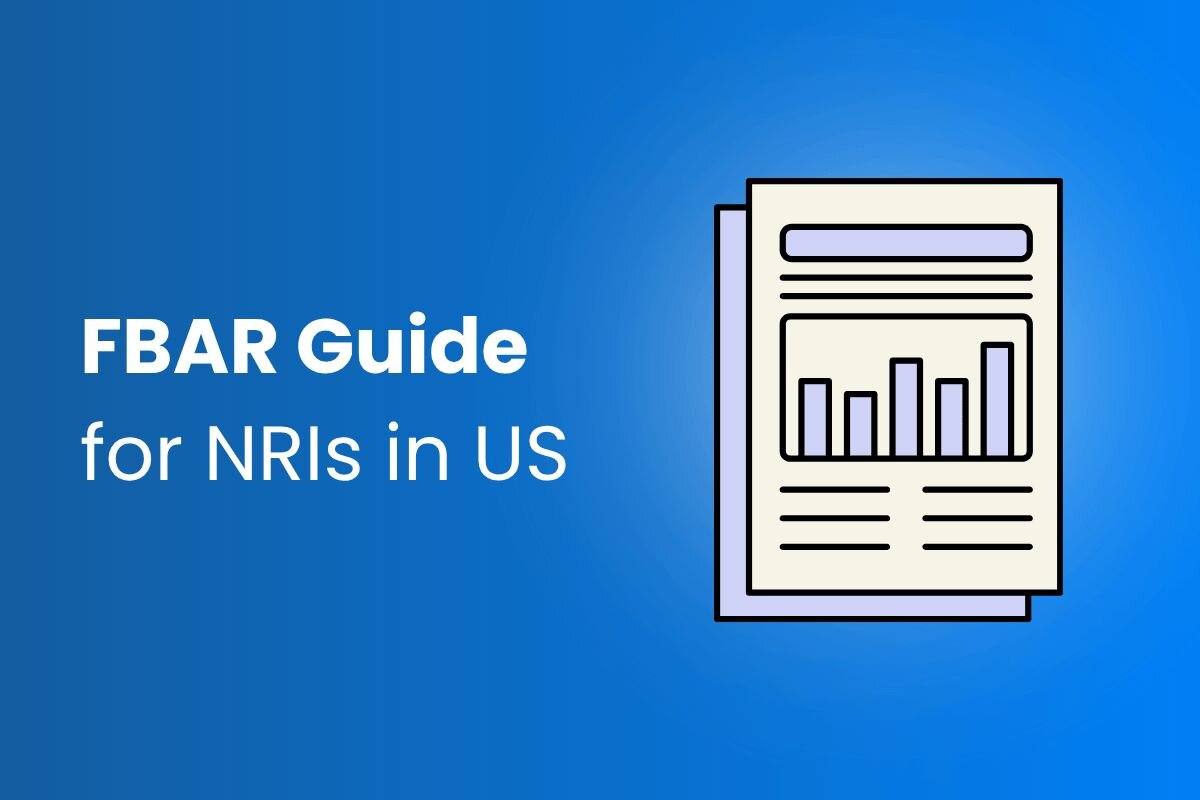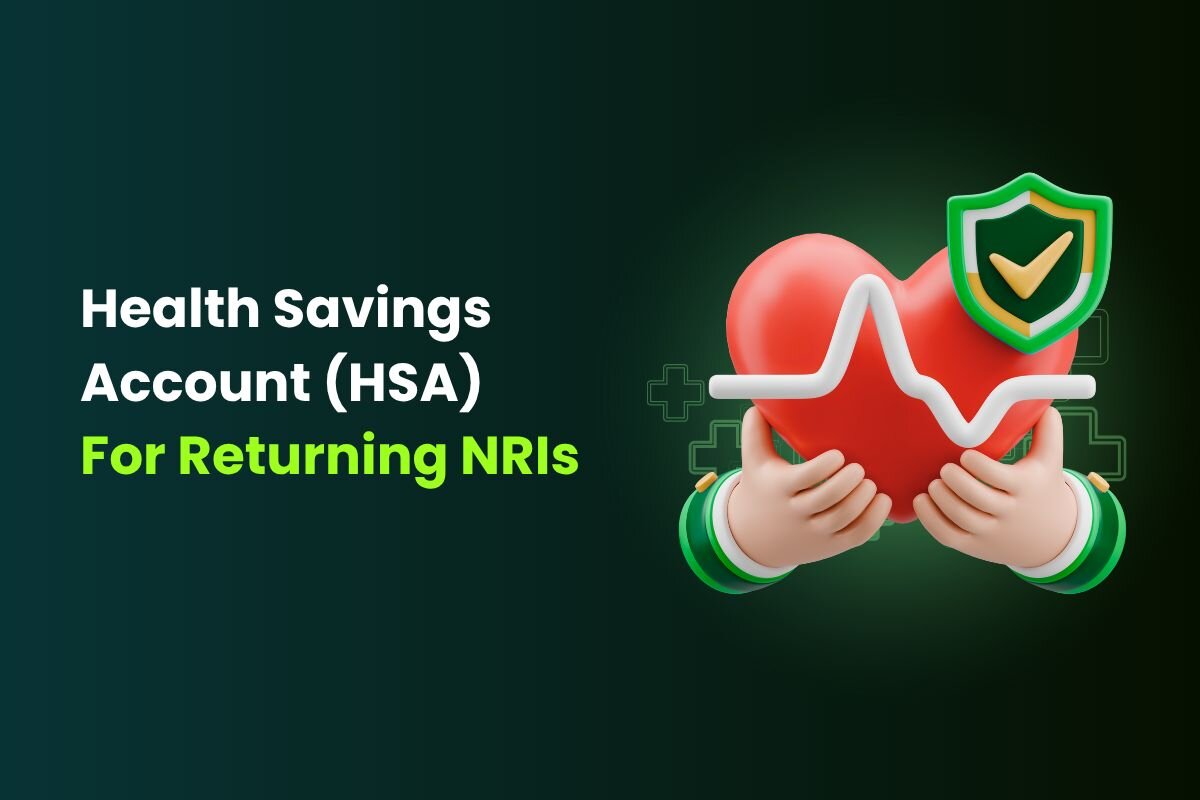Choosing a financial advisor is really a choice about time, cost, and how much guidance you want. A human advisor can bring context, planning, and reassurance, but that level of service can be expensive and slow to schedule.
An AI financial advisor focuses on the day‑to‑day work of investing. It uses software to build a diversified portfolio, keep it balanced, and look for tax savings, usually at a lower ongoing fee.
I've spent years in finance, and I'll be straight with you. AI financial advisors are game-changers for some people and terrible choices for others.
Key Takeaway
AI financial advice can be smart, cheap, and automated - if your money life is simple. In this blog, you’ll understand where Artificial Intelligence (AI) shines, where humans win, and how to choose the right mix.
- Pay far less in fees vs traditional advisors
- Get automated rebalancing and tax-loss harvesting
- Use AI for routine goals; bring humans for complex life events
- Watch risks: data privacy, no fiduciary duty, model limits
- Pick platforms with strong security, clear fees, real personalization
- Consider a hybrid setup as your wealth and complexity grow
Understanding AI Financial Advisors: What They Are and How They Work
An AI financial advisor learns about you first. It asks for your goals, your time horizon, and how much risk you can live with, then reads balances and transactions from your linked accounts. With that picture, it proposes a low‑cost mix of funds and a savings schedule that fits your targets.
Once you approve the plan, the software runs the maintenance you would otherwise postpone. It checks when your allocations drift and rebalances back to target. It automates contributions so money moves on schedule. In taxable accounts it looks for losses that can be harvested and explains the changes in plain language so you know what happened and why.
As life moves, the plan adjusts. A raise, a new child, a home purchase, or a move can all shift the numbers. The advisor updates your targets and contributions so the plan remains realistic and you are not rebuilding from scratch.
There are limits. Complex situations like divorce, inheritance, concentrated stock, equity compensation, or cross‑border tax choices call for judgment. An AI advisor follows rules and optimizes within those rules. When trade‑offs are legal, tax, or family driven, a human should be in the loop.
In short, think of an AI financial advisor as reliable investment maintenance that keeps your plan on track while you decide the direction.
AI vs Human Financial Advisors:
Where AI Advisors Win
An AI financial advisor is built for consistency. It follows rules every day, keeps your portfolio aligned with your targets, and handles routine tax work without waiting on a calendar. That steadiness is useful when markets are noisy or life is busy. Software also tends to cost less for ongoing maintenance because it scales well. Automation helps you stick with the plan by running the plan on schedule. Many services operate within a clear playbook and publish disclosures so you know what to expect.
Where Human Advisors Win
A human advisor shines when the question is about tradeoffs and judgment. Equity compensation, a business sale, real estate moves, inheritance, or cross‑border changes involve law, taxes, and family goals. A person can weigh options, explain consequences, coordinate across legal, tax, insurance, and estate work, and help you choose a path you can live with. The premium you pay buys thinking time and experience, which can be worth it when a single decision has long‑term impact. Humans also provide coaching in stressful markets when you need context more than rules.
The practical takeaway is simple. Use automation for the routine so it always gets done. Use a person for the exceptions so the hard decisions are made with full context. A hybrid model lets you combine both without committing to one path forever.
Can ChatGPT, Perplexity, or Claude Be My AI Financial Advisor?
Tools like ChatGPT, Perplexity, Claude, and Gemini are excellent teachers. They explain terms, compare options, and organize your thinking. If you want a plain-English refresher on Roth IRAs or compound interest, they are great.
They are not built to manage your money. General chatbots may rely on dated training data. That means they can miss current interest rates, tax rules, or market changes. Acting on old information can cost you.
They also make math and planning mistakes. Independent tests have shown errors in retirement projections and in simple savings recommendations. A human advisor would not stop at a textbook answer when your situation is messy.
Perplexity searches the web in real time, which helps with freshness, but it still is not a portfolio tool. Claude reasons well, yet it does not see your full financial picture or carry responsibility for outcomes.
Accountability matters. General chatbots are not fiduciaries. If a chatbot’s answer leads to a loss, there is no duty of care and no recourse. Registered advisors and regulated investing apps operate under clearer rules and disclosures.
Use these chatbots to learn and to prepare good questions. For actual decisions, use an AI financial advisor app that connects to live account data and is designed for portfolio management, or speak with a human advisor when judgment is required. These chatbots are a starting point, not the destination.
How AI Creates Personalized Portfolios Based on Your Risk Tolerance
This is where AI investment advisors actually shine. They're really good at building custom portfolios that match your specific situation.
The process goes way deeper than just asking if you're "conservative" or "aggressive." Good platforms ask behavioral questions: What would you do if your portfolio dropped 20% in a month? How would you feel if your returns lagged your neighbor's? These questions reveal your actual risk tolerance, not just what you think it is.
Beyond risk, AI analyzes:
- Your timeline (retiring in 30 years vs buying a home in 3 years)
- Your tax bracket (and finds ways to reduce your tax bill)
- Your existing investments (so you're not over-concentrated)
- Your spending patterns and behaviors over time
Then it builds a portfolio from thousands of possible ETFs. For a 25-year-old with high risk tolerance? Maybe 90% stocks, 10% bonds. For someone 60 and nearing retirement? More like 50-40-10 (stocks-bonds-REITs).
The real magic is continuous rebalancing. When stocks surge and throw off your target allocation, AI automatically sells some and buys bonds. You're forced to "sell high, buy low" without thinking about it. Platforms like InvestMates, Wealthfront perform daily tax-loss harvesting, which JP Morgan research shows can add up to 2.27% to annual returns.
Compare that to checking your portfolio quarterly and maybe rebalancing once a year. AI does it constantly, without emotion, always following the strategy.
Benefits of an AI Financial Advisor App
Always-on upkeep
The app watches your accounts every day, corrects portfolio drift, keeps contributions on schedule, and surfaces small tasks before they pile up. Consistency beats good intentions.
Whole-picture view
It pulls in banks, brokerages, loans, and cards to show your true net worth and exposures in one place. You can spot concentration, cash drag, and duplicate funds quickly.
Personalized next steps
You do not get generic tips. You get clear instructions like “move ₹X to this goal” or “pay ₹Y on this card.” Small, specific actions lead to follow-through.
Early-warning alerts
Unusual spend, missed deposits, bill spikes, or low cash are flagged in time to fix them. Prevention costs less than cleanup.
Quiet tax hygiene
In taxable accounts the app tracks lots, avoids wash-sale issues, and harvests losses when useful. These small wins add up over time without manual work.
Goal-linked cashflow
Incoming cash is auto-routed across goals by priority. Targets adjust when life changes, so you make progress on several goals at once.
Fast “what-if” planning
You can test a job change, a home purchase, a market drop, or a new savings rate and see the impact in seconds. Better choices come from seeing trade-offs clearly.
Behavioral guardrails
Optional speed bumps nudge you to pause before impulsive trades, remind you of the plan rules, and reduce costly mistakes made in stressful moments.
Fee and fund quality checks
The app spots expensive funds and duplicate exposures and suggests simpler, lower-cost alternatives. Quiet fee leaks do real damage over long periods.
Clear audit trail
Every change is time-stamped and explained in plain language. You know what happened, why it happened, and you can show it to a tax pro or planner later.
Critical Risks and Limitations You Should Know
Real talk: AI financial advisors aren't perfect. Here are the risks that actually matter.
No Legal Protection This is the big one. Human advisors with fiduciary duty can be sued if they give bad advice. AI platforms? You're on your own. The terms of service make it clear they're not liable for losses. That lack of accountability should make you think twice about complex decisions.
Your Data Is Everywhere These apps need access to everything - income, spending, investments, Social Security number. One breach and millions of users' data is compromised. It happens more than you think. Plus, many platforms use your anonymized data to train algorithms or sell to third parties. Read the privacy policy.
Algorithmic Bias Is Real A National Bureau of Economic Research study found AI lending algorithms discriminate against people of color and women. The AI learns from historical data, which contains societal biases. It then perpetuates those biases in credit scores and loan terms. Portfolio recommendations can reflect similar problems.
Can't Handle Life's Complexity Divorce? Serious illness? Inherited a business? AI gives you generic advice when you need specific guidance. Remember that cancer patient ChatGPT told to "save more"? Yeah. Algorithms don't understand nuance.
Technical Failures Happen Platforms crash. Algorithms malfunction. During market chaos when you need access most, systems can fail. I've seen it happen. Always have a backup plan.
The point isn't to scare you away from AI. It's to use these tools with eyes wide open. For straightforward situations, the benefits outweigh the risks. For complex situations, combine AI with human expertise.
Key Features to Look for in an AI Financial Advisor
Not all AI for personal finance apps are created equal. Here's what actually matters when you're choosing one:
Security First
Look for 256-bit encryption (bank-level security), mandatory two-factor authentication, and regular third-party security audits. Check if they've had breaches in the past and how they handled them. This isn't negotiable.
Clear Fees, No Surprises
The best platforms tell you exactly what you pay upfront. Watch for advisory fees (0-0.35% is typical), underlying fund expenses (should be 0.05-0.20%), and hidden fees like account closure or transfer fees. Do the math on total cost.
Real Personalization
Skip platforms that just ask "conservative or aggressive?" Good ones use behavioral questions about real scenarios. They should let you set multiple goals with different timelines and customize your portfolio beyond basic templates.
Tax Optimization
Daily tax-loss harvesting is way better than quarterly. JP Morgan research shows this feature alone can add over 2% to your returns annually. Make sure the platform considers your tax bracket in its recommendations.
Account Integration
Can you link your 401(k), IRA, and other accounts to see your complete picture? Good platforms factor in all your investments, not just what's on their platform.
Track Record
How long has the company been around? Who's backing it? What do actual users say on independent review sites? Newer isn't always better - you want proven reliability.
Human Backup
Even with AI, you should have access to real people when things get complicated. Check if they offer phone support or if you're stuck with email and chatbots.
Choosing the Right Approach: When to Use AI vs a Human Advisor
Here's my honest take after years in this industry: most people should use both, just at different times.
Use AI Financial Advisors When:
- You're just starting out (under $100K in investments)
- Your situation is straightforward (W-2 job, simple retirement goals)
- You want to minimize fees and maximize automation
- You're comfortable with tech and don't need hand-holding
- You need basic portfolio management and tax optimization
Bring in a Human When:
- Your portfolio hits $500K+ and complexity increases
- You're going through major life changes (divorce, inheritance, selling a business)
- You need estate planning or have special needs children
- Tax situations get complicated (multiple income streams, business ownership)
- You need emotional support during market volatility
- You're making six-figure decisions and want a second opinion
The Smart Hybrid Approach This is what I recommend to most people: let AI investment advisors handle your day-to-day portfolio management. Get the low fees, automatic rebalancing, and tax optimization.
But when big decisions come up - buying a house, planning retirement distributions, restructuring after a job change - pay a fee-only advisor for a consultation.
Some platforms like Betterment, InvestMates and Empower already offer this hybrid model. You get AI for routine stuff plus access to humans when needed. It costs more than pure AI but less than traditional advisory.
Your Action Plan If you have under $100K and a simple situation? Start with an AI for personal finance app today like InvestMates.
If you're over $500K or have complexity? Consider a human advisor or hybrid model.
Somewhere in between? Start with AI and graduate to hybrid as your needs grow. There's no rule saying you can't change approaches as your life changes.
Conclusion
AI financial advisors are a real step forward for everyday investors. They keep your portfolio on target, build in basic tax awareness, and turn a plan into steady progress at a lower ongoing cost. If you are starting out or building toward retirement, an app can handle the routine so you do not have to.
Use AI for the day‑to‑day. Bring in a human when a major decision appears or your life changes. Review the plan yearly. The right mix is the one that helps you stay invested, avoid avoidable costs, and move toward your goals with less stress.
Frequently Asked Questions
Is an AI financial advisor better than a human advisor?
It depends on your situation. AI is excellent for ongoing tasks like diversified portfolios, rebalancing, and Tax Loss Harvesting (TLH) at a lower cost. Humans are better when judgment is needed, like equity compensation, estate planning, cross-border taxes, or major life changes. Many people get the best results by using AI for daily execution and a human for big decisions.
Can ChatGPT (or Claude/Perplexity) replace a financial advisor?
No. General chatbots are great for learning concepts and organizing your thoughts, but they do not see your full financial picture, cannot manage accounts directly, and are not accountable for outcomes. Use them to research and prepare questions. Use an AI advisor app or a human professional when you need real portfolio management or advice.
What features should I look for when choosing an AI financial advisor app?
Prioritize security, clear fees, and a transparent portfolio approach. You want two-factor authentication, encryption, and a plain-English privacy policy. Fees should show both the advisory charge and fund costs. Look for goal-based settings, rebalancing rules, TLH in taxable accounts, support for linking outside accounts, and access to a human when questions need judgment.
Can an AI advisor create a personalized portfolio based on my risk tolerance?
Yes. Good apps ask short scenario questions to understand how you handle losses and setbacks, then combine your answers with timeline, tax bracket, and current holdings. The result is a low-cost mix of funds and a contribution plan that matches your goals, with ongoing monitoring and rebalancing to keep you on track.
Do AI financial advisor apps support tax-loss harvesting?
Many do in taxable accounts. The software scans for positions that are below cost, sells to realize a loss, and reinvests in similar exposure while avoiding wash-sale issues. TLH can improve after-tax results over time, but benefits vary with markets and your tax situation. It is not a guarantee of higher returns every year.
How do I start using an AI financial advisor for my first investment account?
Open an account with a reputable provider, answer a short intake on goals and risk, and link your existing accounts. Fund the account, set automatic contributions, and review the plan at least once a year or after major life changes. Starting small is fine. The key is steady contributions and staying with the plan.
Do AI financial advisor apps integrate with my existing bank or brokerage accounts?
Most support secure connections to major banks and brokerages so they can read balances and transactions and keep your plan current. Integration lists vary by provider, so check supported institutions and confirm that connections use modern authentication and strong encryption.
About the Author

By Prakash
CEO & Founder of InvestMates
Prakash is the CEO & Founder of InvestMates, a digital wealth management platform built for the global Indian community. With leadership experience at Microsoft, HCL, and Accenture across multiple countries, he witnessed firsthand challenges of managing cross-border wealth. Drawing from his expertise in engineering, product management, and business leadership, Prakash founded InvestMates to democratize financial planning and make professional wealth management accessible, affordable, and transparent for every global Indian.




